[vc_row][vc_column][vc_column_text]
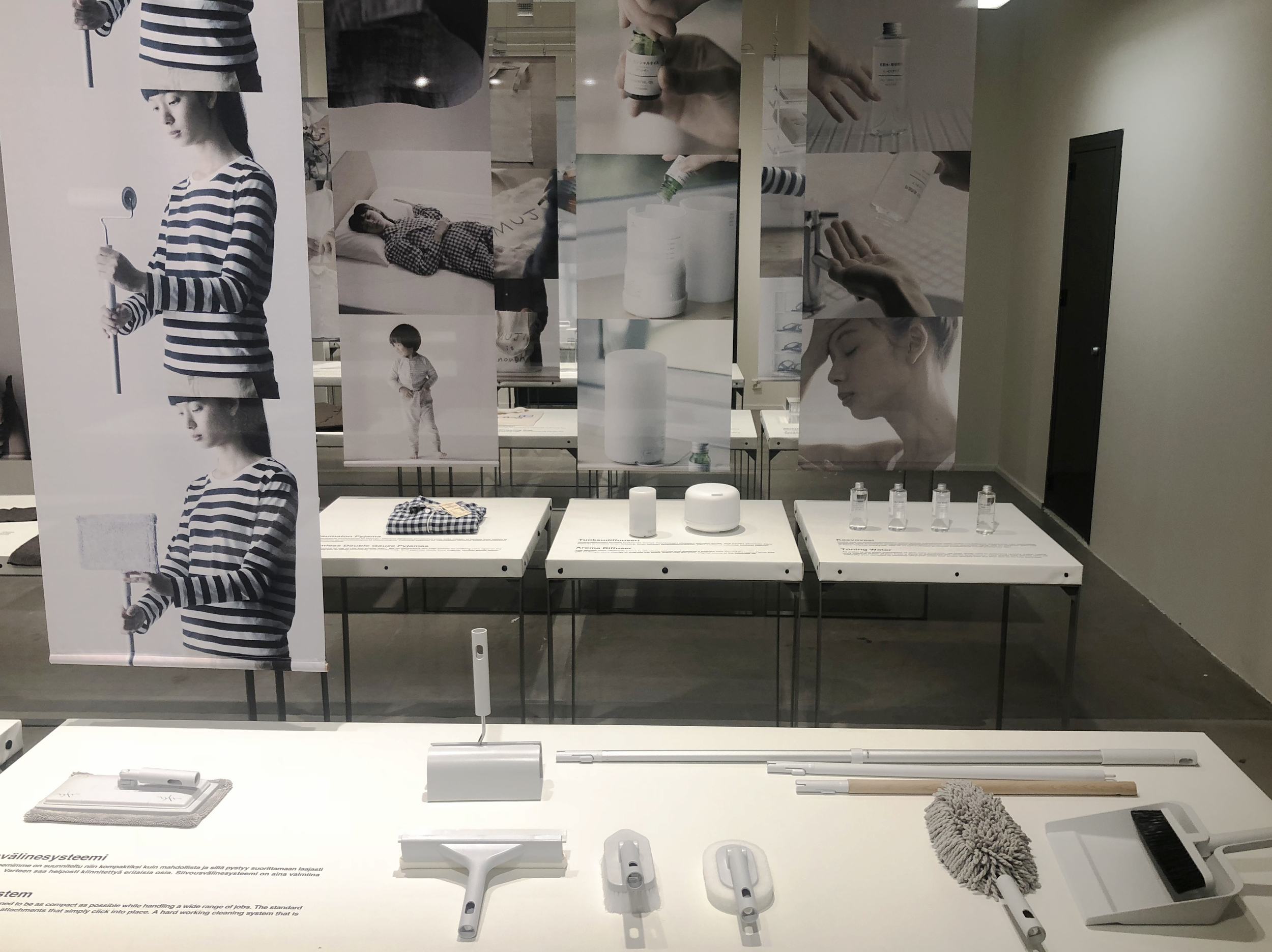 Of course, NYC has multiple experience-focused stores.
Sephora Beauty TIP Workshop offers beauty services, with makeup touch-ups, makeovers or customized makeup consultations. At the Converse shop at SoHo you can design your own Converse, and Adidas let’s you to design your own shirt in their flagship store. The new Nike’s House of Innovation offers customized shoes, expert advice, tailoring, courier delivery and pretty much everything you can wish for. You can go to meditate at Lululemon’s NYC flagship store.
New kind of more curated retail experiences like Kämp Garden in Helsinki emerge. It’s too early to say how successful these kind of curated experiences will be, but the direction is right.
Of course, NYC has multiple experience-focused stores.
Sephora Beauty TIP Workshop offers beauty services, with makeup touch-ups, makeovers or customized makeup consultations. At the Converse shop at SoHo you can design your own Converse, and Adidas let’s you to design your own shirt in their flagship store. The new Nike’s House of Innovation offers customized shoes, expert advice, tailoring, courier delivery and pretty much everything you can wish for. You can go to meditate at Lululemon’s NYC flagship store.
New kind of more curated retail experiences like Kämp Garden in Helsinki emerge. It’s too early to say how successful these kind of curated experiences will be, but the direction is right.
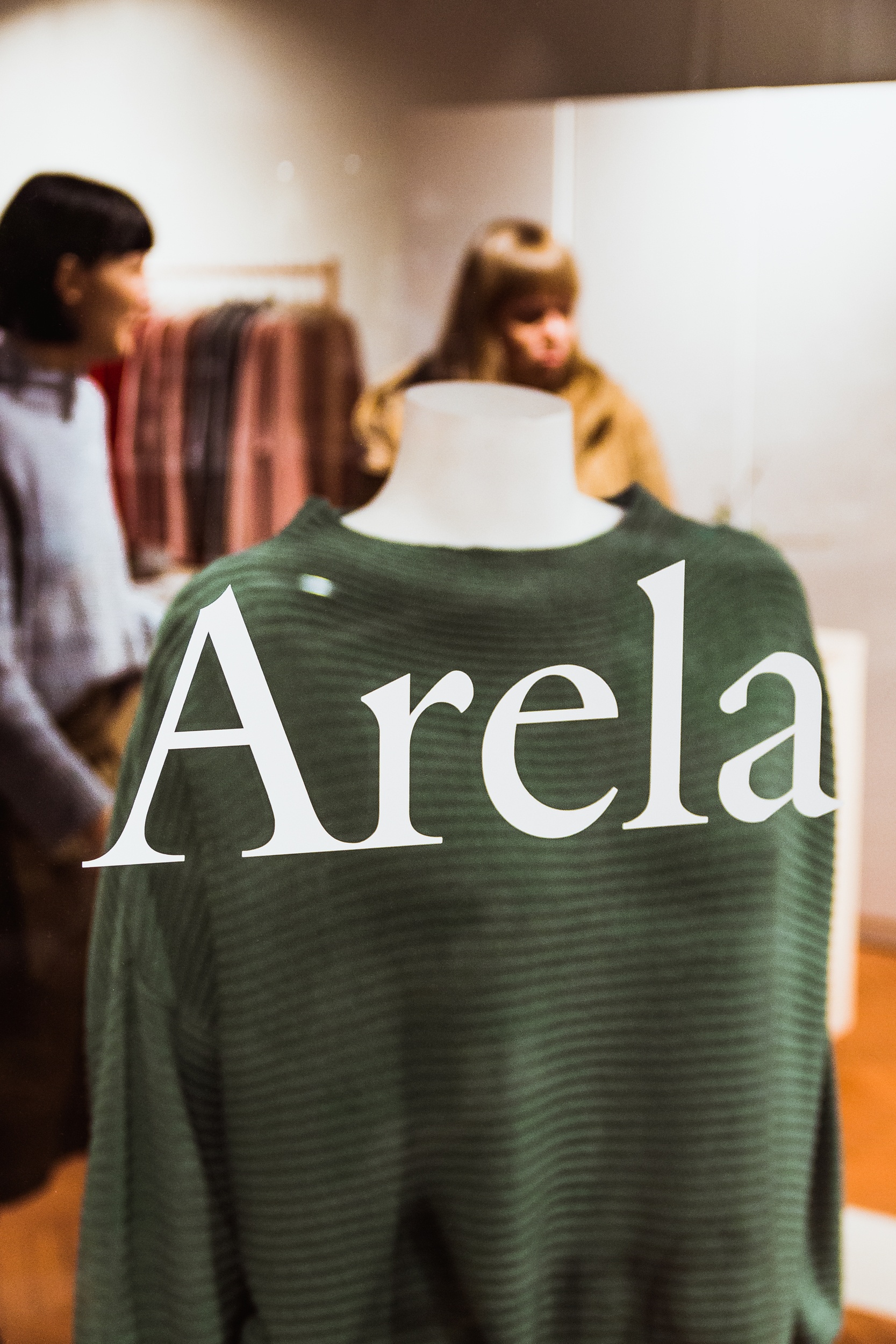 New kind of retail environment supports brands like Arela, a high quality cashmere and merino wool fashion brand. One of their cornerstones is excellent customer service that spans on the entire lifecycle of the product. Even years after buying your sweater, you can bring your old sweater for Arela-service at the store, and get it back serviced, and looking like new.
Brick and mortar stores need to offer an experience, and customer service that you can’t get online. Retail experience has to be authentic, real, and something online shopping can not replace. When stores nail the human connection and great customer service, you know you want to go back there. Sadly, as sales numbers are declining – the first thing many retailers start saving money from is the sales personnel.
Historically Barnes & Noble nailed it by offering a service and an experience: they survived the first Amazon-store-killing-wave by putting coffee shops in each store, and by starting to sell much more than just books. Now, how many times have you gone to a book store just for coffee?
New kind of retail environment supports brands like Arela, a high quality cashmere and merino wool fashion brand. One of their cornerstones is excellent customer service that spans on the entire lifecycle of the product. Even years after buying your sweater, you can bring your old sweater for Arela-service at the store, and get it back serviced, and looking like new.
Brick and mortar stores need to offer an experience, and customer service that you can’t get online. Retail experience has to be authentic, real, and something online shopping can not replace. When stores nail the human connection and great customer service, you know you want to go back there. Sadly, as sales numbers are declining – the first thing many retailers start saving money from is the sales personnel.
Historically Barnes & Noble nailed it by offering a service and an experience: they survived the first Amazon-store-killing-wave by putting coffee shops in each store, and by starting to sell much more than just books. Now, how many times have you gone to a book store just for coffee?
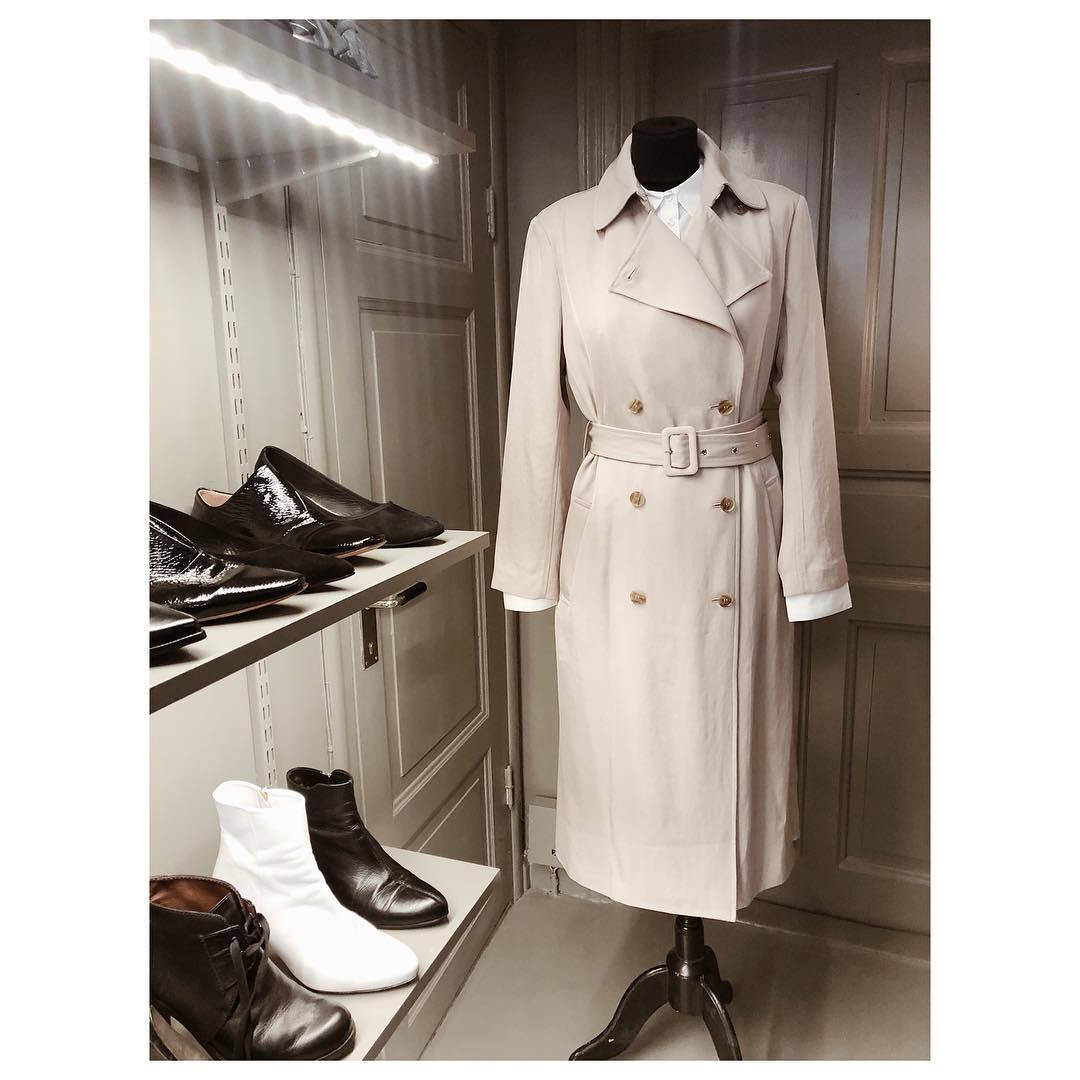 Photo: Filippa K Second Hand
This kind of service and second hand concepts are great as customer service concepts, but also as possible revenue models, and enhancing brand’s values as a sustainable business. The hopes of scoring low-priced or rare second hand finds can also bring foot traffic to stores.
Photo: Filippa K Second Hand
This kind of service and second hand concepts are great as customer service concepts, but also as possible revenue models, and enhancing brand’s values as a sustainable business. The hopes of scoring low-priced or rare second hand finds can also bring foot traffic to stores.
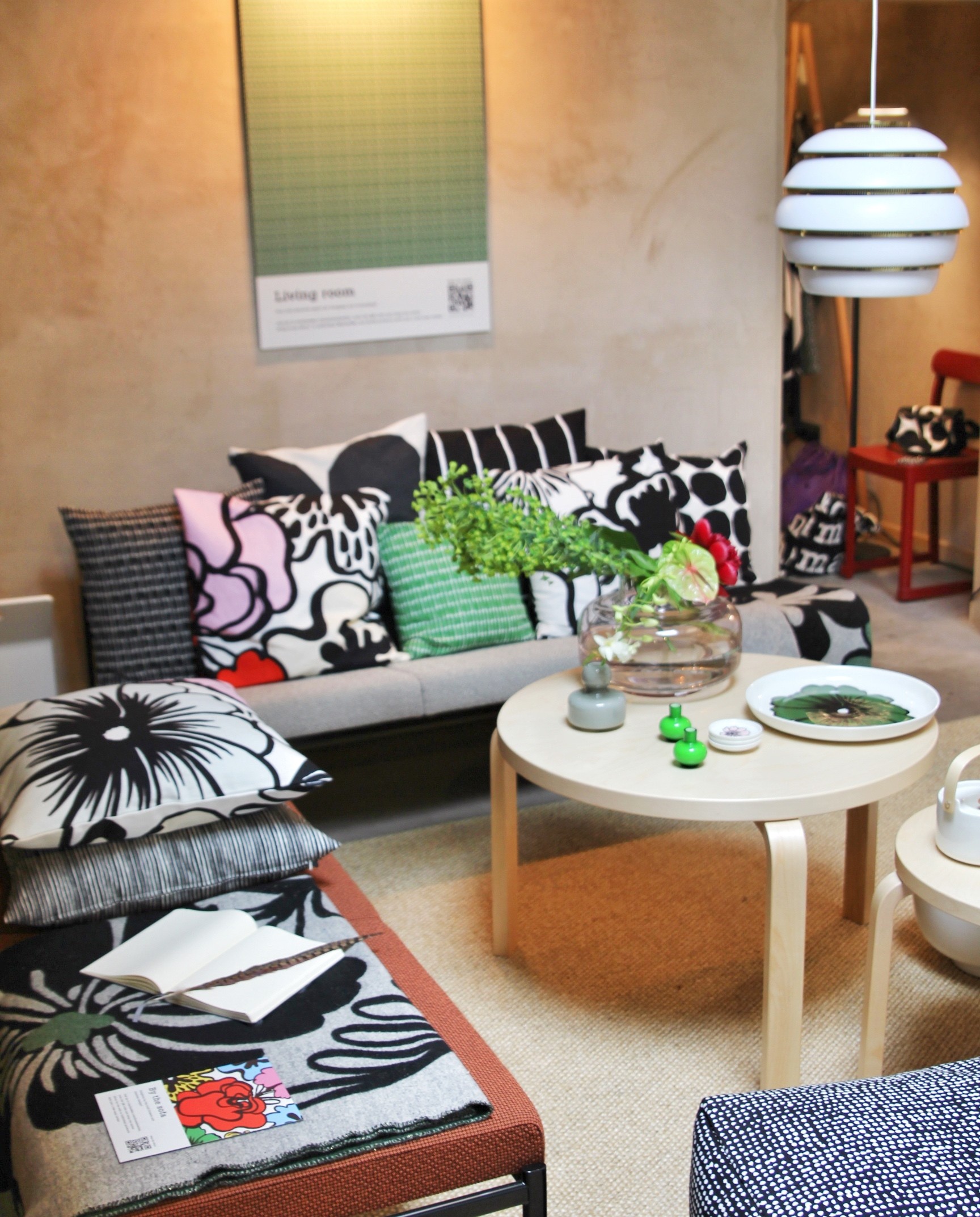 Finnish Marimekko tried similar shopping experiment during Milan Design Week. They had a curated home experience and each room had a QR code that took you to an online store where to purchase the products.
Finnish Marimekko tried similar shopping experiment during Milan Design Week. They had a curated home experience and each room had a QR code that took you to an online store where to purchase the products.
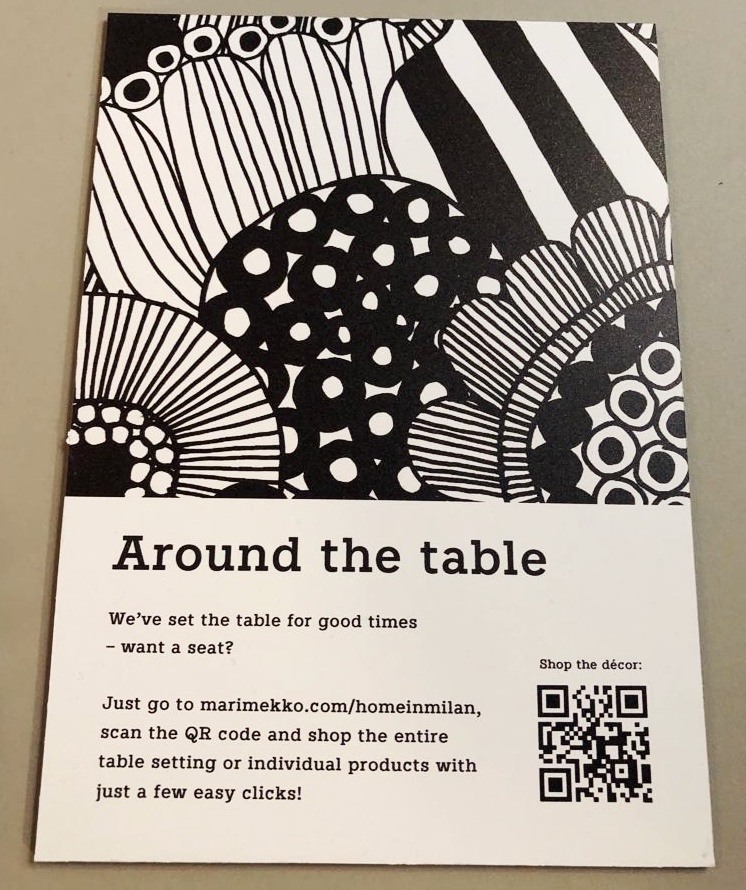
Not News: Retail Has Changed as We Know It
The changing retail landscape interests me as a consumer, but also as a marketing professional. Besides running Skimbaco Lifestyle, I started Presnal5 strategic marketing agency to help Nordic companies with global marketing. I am also a partner in Happy Textiles, a textile technology platform company focusing to help companies to speed up their go to market time. My work includes a lot of talk about retail marketing and new technology these days. Remember the mall and GAP store scene in the movie Minority Report? We can expect augmented reality and virtual reality solutions for stores for sure. Read more about some of the changes we are seeing now – and what comes next!Visit Your Favorite Retail Store Now – Before It’s Too Late
If you opt for online more often than the brick-and-mortar retail store, you might not be able to visit your favorite store anymore. For many stores it already is too late. More than 6,100 stores are closing in 2019 as the retail apocalypse keeps on going reports Business Insider with the full list of store closures. Many major retailers such as Victoria’s Secret, Gap, Target, J.Crew, and Abercrombie & Fitch, among many others have announced plans to close at least some stores across the US this year. The retail situation in Europe isn’t much different. H&M, Zara, and Esprit to name a few have been closing stores in Europe.Revamping the Retail Stores: Bring on Experiences
Has your favorite mall already closed down? I’m not a fan of big malls, but here in Helsinki they are conveniently on almost every metro stop, and they are unavoidable part of my life. Convenient shopping is one thing for necessities, but for me to go to a store just to look – not going to happen. “Shopping” is not a hobby anymore, in fact I try to buy as little as possible. But I am still excited for example about Muji opening their store in a mall here in Helsinki later this year. Their pop-up shop this winter was already a promise of a different kind of an experience. They introduced the brand’s most popular products in an art gallery-like installation. I heard a rumor their new store will be showcasing food in a prominent way, and of course, they are totally amping up the entire experience and their brand by introducing the first ever autonomous shuttle bus in Finland as well. Of course, NYC has multiple experience-focused stores.
Sephora Beauty TIP Workshop offers beauty services, with makeup touch-ups, makeovers or customized makeup consultations. At the Converse shop at SoHo you can design your own Converse, and Adidas let’s you to design your own shirt in their flagship store. The new Nike’s House of Innovation offers customized shoes, expert advice, tailoring, courier delivery and pretty much everything you can wish for. You can go to meditate at Lululemon’s NYC flagship store.
New kind of more curated retail experiences like Kämp Garden in Helsinki emerge. It’s too early to say how successful these kind of curated experiences will be, but the direction is right.
Of course, NYC has multiple experience-focused stores.
Sephora Beauty TIP Workshop offers beauty services, with makeup touch-ups, makeovers or customized makeup consultations. At the Converse shop at SoHo you can design your own Converse, and Adidas let’s you to design your own shirt in their flagship store. The new Nike’s House of Innovation offers customized shoes, expert advice, tailoring, courier delivery and pretty much everything you can wish for. You can go to meditate at Lululemon’s NYC flagship store.
New kind of more curated retail experiences like Kämp Garden in Helsinki emerge. It’s too early to say how successful these kind of curated experiences will be, but the direction is right.
 New kind of retail environment supports brands like Arela, a high quality cashmere and merino wool fashion brand. One of their cornerstones is excellent customer service that spans on the entire lifecycle of the product. Even years after buying your sweater, you can bring your old sweater for Arela-service at the store, and get it back serviced, and looking like new.
Brick and mortar stores need to offer an experience, and customer service that you can’t get online. Retail experience has to be authentic, real, and something online shopping can not replace. When stores nail the human connection and great customer service, you know you want to go back there. Sadly, as sales numbers are declining – the first thing many retailers start saving money from is the sales personnel.
Historically Barnes & Noble nailed it by offering a service and an experience: they survived the first Amazon-store-killing-wave by putting coffee shops in each store, and by starting to sell much more than just books. Now, how many times have you gone to a book store just for coffee?
New kind of retail environment supports brands like Arela, a high quality cashmere and merino wool fashion brand. One of their cornerstones is excellent customer service that spans on the entire lifecycle of the product. Even years after buying your sweater, you can bring your old sweater for Arela-service at the store, and get it back serviced, and looking like new.
Brick and mortar stores need to offer an experience, and customer service that you can’t get online. Retail experience has to be authentic, real, and something online shopping can not replace. When stores nail the human connection and great customer service, you know you want to go back there. Sadly, as sales numbers are declining – the first thing many retailers start saving money from is the sales personnel.
Historically Barnes & Noble nailed it by offering a service and an experience: they survived the first Amazon-store-killing-wave by putting coffee shops in each store, and by starting to sell much more than just books. Now, how many times have you gone to a book store just for coffee?
Unique Second Hand Shopping Experience
Another trend is to offer second hand or refurbished products. Arela rolled out an option to bring back their used products made by the brand, and the brand is then selling them second hand. Besides clothing, also Finnish Arabia tested the same for their coffee cups and other dishes earlier this year, but not sure if it was successful. Swedish fashion brand Filippa K already opened a Filippa K second hand store in Stockholm. Photo: Filippa K Second Hand
This kind of service and second hand concepts are great as customer service concepts, but also as possible revenue models, and enhancing brand’s values as a sustainable business. The hopes of scoring low-priced or rare second hand finds can also bring foot traffic to stores.
Photo: Filippa K Second Hand
This kind of service and second hand concepts are great as customer service concepts, but also as possible revenue models, and enhancing brand’s values as a sustainable business. The hopes of scoring low-priced or rare second hand finds can also bring foot traffic to stores.
Omni-channel – Marriage between Online Store & Brick and Mortar
Choosing the right retailers for your product has always been important, but these days the qualifications what makes a “right retailer” can be different. I spoke with one European brand who sells their products in the USA, and they said their sales at the retailer stores were moderate, but they got a large amount of online orders from the USA from the cities they have stores in. The brick and mortar stores drove the online shopping – even though they had to order the products all the way from Europe. Great for the brand – but not necessary for their retailer partners who did the sales and marketing yet they didn’t catch the order. A friend of mine is a store manager in a store of a larger chain. She said the individual stores have sales targets, and they were not allowed to tell the customers that the company’s own website might have more sizes or colors available – their sales goal was always to try to get the sale in the store, never online. Well, this is just a sure way to ruin your business in the long run. The only way to survive is to create a model that marries digital with an in-store experience. Driving online shopping via QR codes is one way. For example Amazon opened a Black Friday pop-up store in Madrid, and people could browse in the store, and then scan the QR code and buy the product online. Imagine Christmas shopping without lanes. Finnish Marimekko tried similar shopping experiment during Milan Design Week. They had a curated home experience and each room had a QR code that took you to an online store where to purchase the products.
Finnish Marimekko tried similar shopping experiment during Milan Design Week. They had a curated home experience and each room had a QR code that took you to an online store where to purchase the products.

